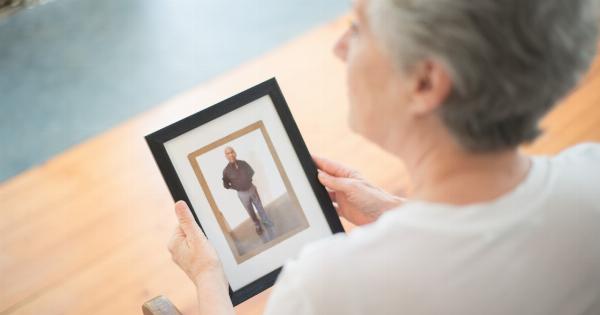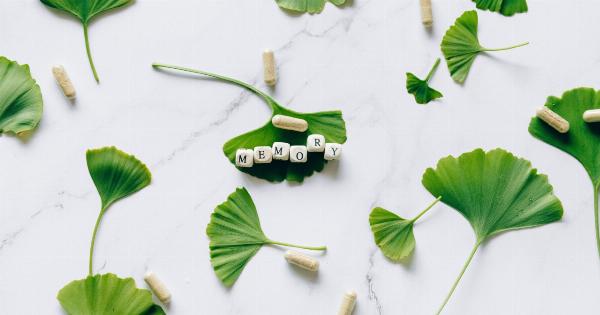As we age, it becomes increasingly important to take steps to maintain our physical health and well-being. One simple yet powerful way to combat the effects of aging is by incorporating more standing into our daily routines.
While sitting has become the norm in today’s society, research has shown that standing can have numerous benefits in terms of anti-aging. In this article, we will explore how standing can help slow down the aging process and improve overall health and longevity.
Improved Blood Flow
When we sit for extended periods, blood tends to pool in our lower extremities, leading to poor circulation. This can result in a variety of health issues, including swollen ankles, varicose veins, and even blood clots.
However, standing encourages better blood flow throughout the body, reducing the risk of these conditions. By standing regularly, we stimulate the muscles in our legs, aiding in the return of blood to the heart and enhancing overall circulation.
Increased Energy Levels
Sitting for lengthy periods can leave us feeling tired, lethargic, and drained of energy. On the other hand, standing promotes increased blood flow and oxygen intake, which can help combat fatigue and improve energy levels.
By incorporating standing into our daily routines, we can enjoy a natural boost in energy that can positively impact our productivity, mental focus, and overall well-being.
Improved Posture and Core Strength
Prolonged sitting often leads to poor posture, as it encourages slouching and a forward-leaning position. This can contribute to muscular imbalances and chronic back pain.
Standing, on the other hand, engages the muscles in our core, back, and legs, which are vital for maintaining proper posture. By regularly standing, we can improve our core strength, build muscle stability, and reduce the risk of developing posture-related issues that often accompany aging.
Reduced Risk of Chronic Diseases
Leading a sedentary lifestyle is strongly associated with an increased risk of developing chronic diseases such as heart disease, type 2 diabetes, and certain types of cancer.
Research has shown that sitting for long periods can negatively affect blood sugar levels, blood pressure, and cholesterol levels. Conversely, standing promotes better metabolic function and helps keep these risk factors in check. By incorporating more standing into our day, we can significantly reduce our overall risk of developing these chronic conditions.
Weight Management and Muscle Tone
Standing, even if it’s just for short periods throughout the day, can help increase our metabolic rate and improve calorie burning. This can aid in weight management and prevent unwanted weight gain.
Additionally, standing engages the muscles in our legs, buttocks, and abdomen, helping to tone and strengthen them. By standing regularly, we can maintain healthy muscle tone and prevent age-related muscle loss, ultimately improving our overall body composition.
Enhanced Cognitive Function
Research has shown that sitting for prolonged periods can have a negative impact on cognitive function and brain health. On the other hand, standing has been found to increase blood flow to the brain, leading to improved cognitive performance.
By incorporating standing into our daily routines, we can enhance our focus, attention, and mental clarity, ultimately promoting better brain health as we age.
Joint and Bone Health
Aging often brings issues with joint health and bone density. However, standing can help combat these age-related problems.
Weight-bearing activities, such as standing, put stress on our bones and promote bone remodeling, which helps keep them strong and healthy. Additionally, standing engages the muscles surrounding our joints, providing stability and support. By incorporating more standing into our day, we can improve joint functionality and reduce the risk of osteoporosis and other bone-related conditions.
Improved Digestion
Sitting for prolonged periods can contribute to digestive issues such as constipation and acid reflux. However, standing after meals has been found to aid in digestion.
When we stand, gravity helps move food through the digestive tract and prevents food and stomach acid from flowing back up. By standing for a short period after eating, we can promote better digestion and minimize discomfort often associated with aging.
Increased Calorie Expenditure
When we stand, our bodies burn more calories compared to sitting. Even though it may not seem significant, the additional calories burned by simply standing instead of sitting can have a cumulative effect over time.
By incorporating more standing into our daily routines, we can increase our calorie expenditure and potentially aid in weight control or weight loss efforts.
Enhanced Mood and Mental Well-being
Regular physical activity, such as standing, has been associated with improved mood and mental well-being. When we stand, our bodies release endorphins, which are known as “feel-good” hormones.
These endorphins can help reduce stress, anxiety, and symptoms of depression. Incorporating standing into our day can improve our overall emotional state and ultimately contribute to a better quality of life as we age.
Conclusion
Standing is a simple yet powerful way to combat the effects of aging. By incorporating more standing into our daily routines, we can enjoy numerous benefits in terms of anti-aging.
From improved blood flow and increased energy levels to enhanced cognitive function and joint health, standing can have a profound impact on our overall well-being. So, let’s take a stand against aging and reap the rewards of this powerful lifestyle change.































